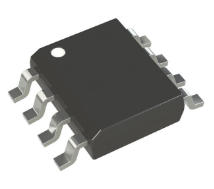- Online chat

MCP7940NT-I/SN
The MCP7940NT-I/SN is a low-power real-time clock (RTC) IC from Microchip, designed for embedded systems requiring precise timekeeping and data storage. This SOIC-8 package device operates across a wide supply voltage range (1.8V to 5.5V) and integrates a 512-bit non-volatile memory for storing time, date, and user data. It features a 2-wire I²C/SMBus interface for communication with microcontrollers and supports both 12-hour and 24-hour time formats (HH:MM:SS) alongside date formatting (YY-MM-DD). The device includes a built-in battery-switchover circuit to maintain timekeeping during main power loss, ensuring uninterrupted operation.
Key Features
The MCP7940NT-I/SN offers a compact footprint (4.9mm × 3.9mm × 1.25mm) and industrial-grade reliability (-40°C to +85°C). It provides 64 bytes of user-configurable RAM for temporary data storage and supports ±15 seconds/year accuracy with an external 32.768kHz crystal. The RTC includes alarms, time-stamping, and a programmable oscillator shutdown mode to reduce power consumption. Its low active current (≤1.5µA) and ultra-low standby current (<0.5µA) make it ideal for battery-powered applications. The device also supports manual or automatic leap-second adjustment and operates with a 100kHz I²C bus speed.
Applications
Primarily used in industrial control systems, medical devices, and smart meters, the MCP7940NT-I/SN is critical for timestamp logging, embedded timekeeping, and battery-backed data storage. Its low power consumption and robust design suit IoT nodes, consumer electronics, and automotive systems requiring accurate time tracking. It is also employed in test equipment, environmental monitors, and security systems where reliable date/time synchronization and data retention are essential.
Summary
The MCP7940NT-I/SN combines compact size, low power consumption, and comprehensive timekeeping features, making it a versatile RTC solution for industrial and consumer applications. Its I²C interface, battery backup, and programmable functionality enable seamless integration into systems demanding precise timing and data integrity. This device remains a trusted choice for designers requiring reliable real-time monitoring and non-volatile storage in space-constrained, power-sensitive environments.







